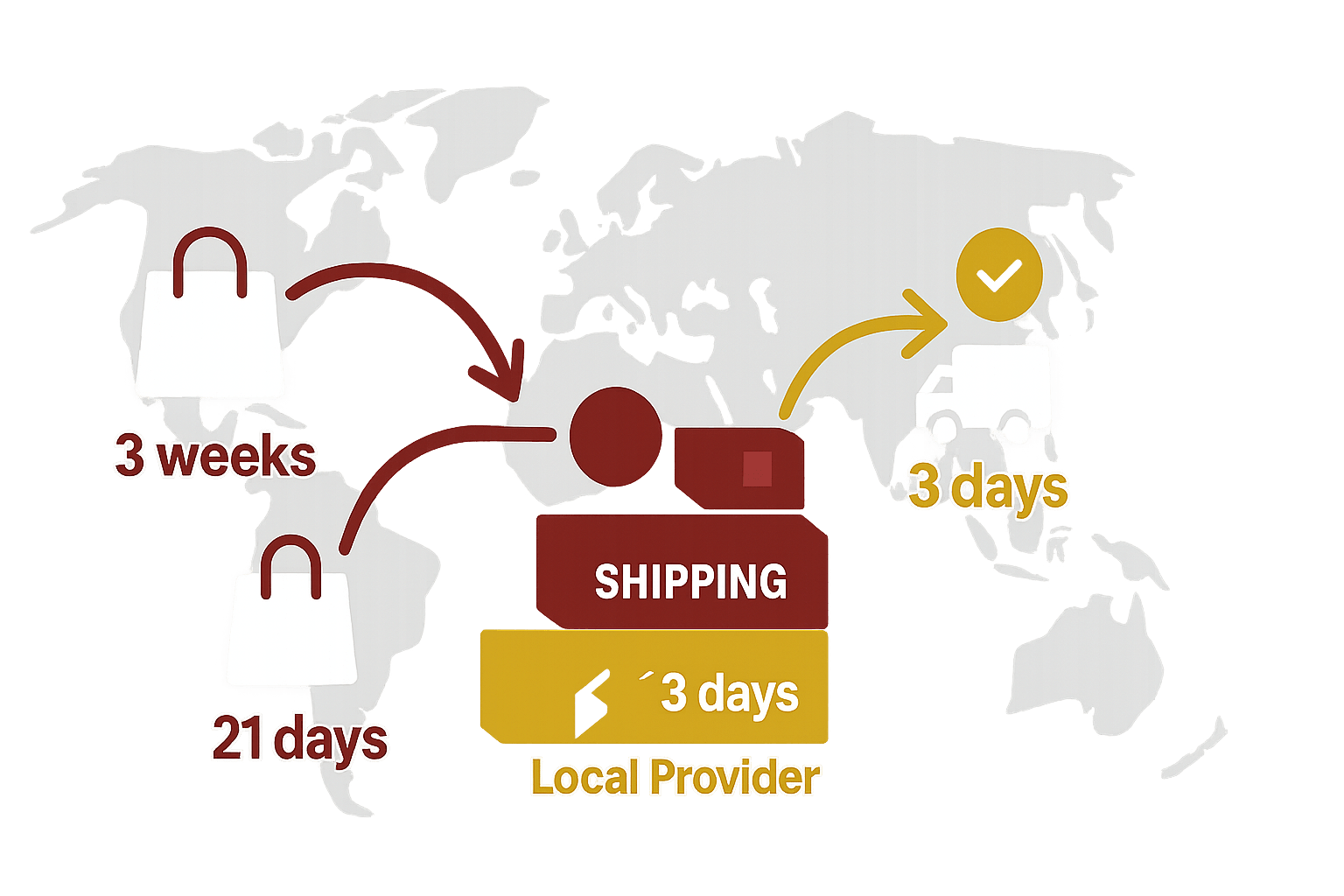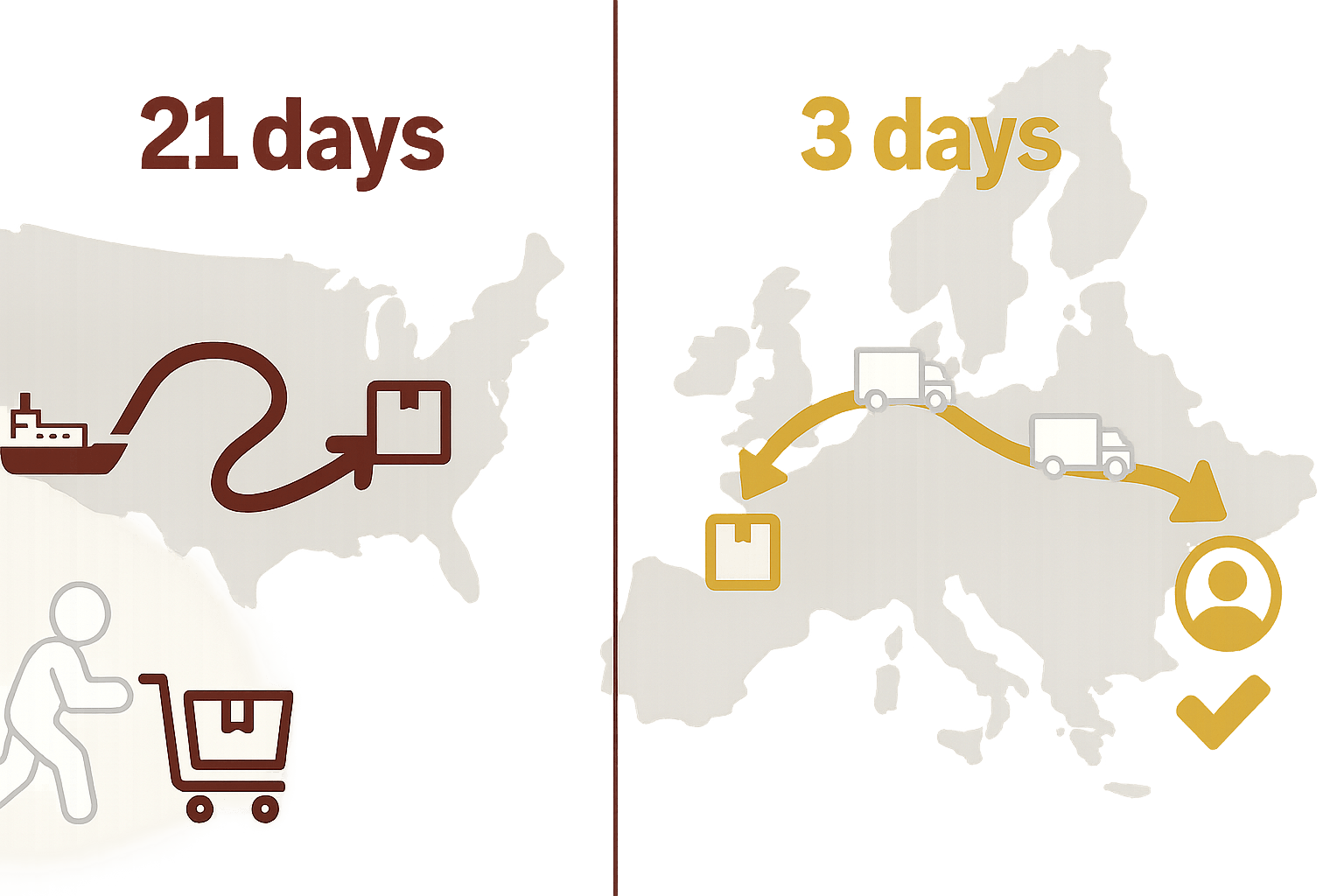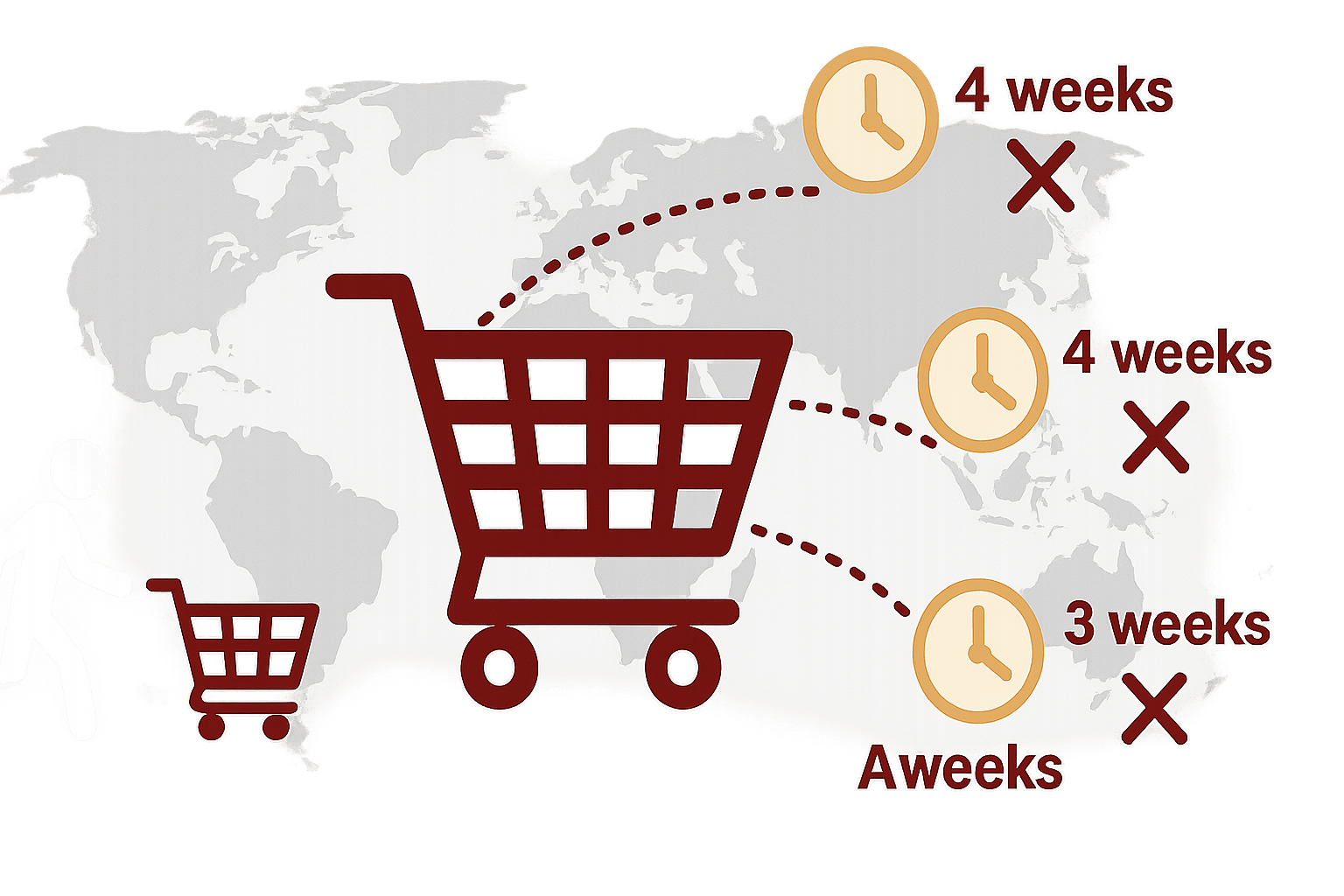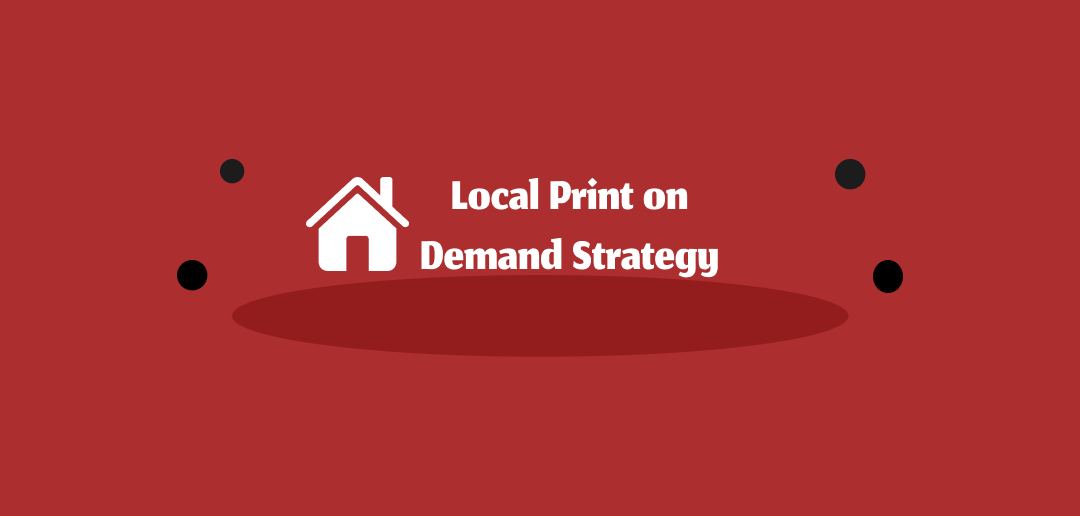Your customer in Berlin just abandoned their cart. Not because of price. Not because of design. But because shipping from your US fulfillment center takes 3 weeks and costs $24. Meanwhile, your competitor just fulfilled the same order in 2 days for €3.50 from a local facility.
You're about to discover why this geography problem costs most print on demand sellers thousands—and exactly how to fix it.
The Geography Problem Destroying Your Margins
Here's what's wild: most POD sellers obsess over designs and Facebook ads while completely missing the bigger issue. Your customers expect Amazon-speed delivery, but you're shipping internationally like it's 1995. That disconnect? It's killing your business.
The expectation gap is honestly ridiculous. Global delivery times dropped to 3.7 days in 2024, yet most print on demand companies still take 7-25 days for international orders. In Mexico 31% of consumers expect delivery within 2 hours. TWO HOURS. Your three-week shipping timeline isn't just slow, it's comedy material for your competitors.
Watch how fast the money disappears:
- International shipping costs devour 40-60% of profit margins (bye-bye, profit)
- Cross border fees sneak in for another 10-25% (surprise!)
- Cart abandonment hits 93% in Middle East markets (yes, really)
- Return rates double on international orders (physics and frustration)
- Damage rates jump 5% with extra handling (more touches, more problems)
These numbers? This is why 75% of POD businesses fail. Not because they can't design. Not because they can't market. Because nobody told them that where you print matters more than what you print.

Local Fulfillment Centers: The Geographic Advantage
Time for some good news: local fulfillment centers completely flip the script on print on demand economics. Stop thinking about providers as companies—start thinking about them as geography.
The 60-Second Provider Check:
- Printful: 12 facilities globally. Fantastic quality. Massive dead zones between locations.
- Gelato: 140+ production hubs across 32 countries. They print where your customers actually live. Genius.
- Printify: 100+ locations through 75+ providers. It's controlled chaos, but it works.
Here's what actually matters: Gelato achieves 90% local production. Your German customer's order prints in Germany. No customs drama. No three-week shipping adventure. Just 2-4 day delivery that makes customers think you've got warehouses everywhere.
Real numbers worth paying attention to: When Mapiful switched to local production, European sales jumped 40% in six months. Not from fancy new designs. Not from better ads. Just from delivering in 3 days instead of 3 weeks. Speed drives sales—shocking revelation, right?
Local print on demand shops and local print on demand companies near me (from your customer's perspective) are quietly beating global giants. They don't have million-dollar marketing budgets, but they have something better: they're already where your customers are.

International Shipping Costs: The Painful Reality
Let's talk numbers that'll make you reconsider everything. International pod shipping from Printful starts at these entertaining prices:
- Europe: $4.79 first item (plus your sanity)
- Canada: $8.29 base (apparently Canada relocated to another planet)
- Worldwide: $11.99 minimum (emphasis on minimum)
- Posters: Up to $49.99 (just for shipping—not a typo)
But wait, 2025 brought fresh chaos. The US eliminated the $800 customs exemption—every package now needs formal entry, adding 3-14 days of "where's my order?" emails. Europe's VAT adds 19-25% on top. It's like playing a game where the rules keep getting worse.
The Math That Hurts: $25 t-shirt shipped to Germany:
- Product: $25
- Shipping: $12
- VAT (19%): $8.93
- Customs fees: $10
- Customer pays: $56
German competitor using local printer: €28, delivered Thursday.
You're not losing on quality. You're not losing on design. You're losing on geography and basic economics.
Location Based Pricing: Making Global Actually Work
Here's the strategy that saves international sales: location based pricing. Sounds complicated? It's not. It's just accepting reality—someone in Switzerland can pay more than someone in Slovakia, and that's okay.
European purchasing power ranges from €70,180 in Liechtenstein to €2,878 in Ukraine. That's a 25x difference, yet most sellers use one global price. That's like selling Ferraris and bicycles at the same price point—equally ridiculous.
Margin Targets That Actually Work:
- Premium markets (US, Western Europe): Lock in 40-50% margins
- Middle markets (Eastern Europe, Latin America): Take 25-35% margins
- Emerging markets: Accept 15-25% margins to get your foot in the door
The technology is embarrassingly simple. IP detection gives you 98% accuracy for automatic adjustments. Shopify's geographic pricing apps cost $29 monthly (less than your coffee budget) and typically increase revenue 10-25% within six months. That ROI is basically stealing.
Smart moves that compound results:
- Bake shipping into base prices (customers hate surprises more than higher prices)
- Set market-specific free shipping thresholds ($75 US, €35 Europe—watch AOV jump 30%)
- Add local customer service in native languages (another 30% conversion boost, easy win)
Building Your Multi-Provider Strategy
Winners don't pledge loyalty to one provider—they use them all strategically. Here's what actually works:
Geographic Order Routing:
- US/Canada → Printful (rock-solid quality)
- Europe → Gelato (local production magic)
- Asia-Pacific → Local print on demand companies (they understand the culture)
- Bulk orders → Printify network (when margins really matter)
Strong local print on demand companies worth your time:
- T-Pop (France): French production, 4-day delivery, properly eco-friendly
- TwoFifteen (UK): 200+ products, UK-based, actually reliable
- Print Bar (Australia): Sydney/Brisbane facilities, 1-3 day Aussie delivery
Testing process: Order samples, stress-test their customer service, time everything obsessively. One solid local partner can crack open an entire regional market.
Automation makes this whole thing manageable. Zapier connects everything—orders flow to the right printer automatically based on geography. Businesses report saving 120+ hours monthly. That's three weeks of your life back every month to actually grow your business.
The whole printful vs printify debate? Wrong question. Smart sellers use both, plus gelato print on demand, deployed strategically like chess pieces.

Expensive Mistakes You're Probably Making
Going Global on Day One: Launching in 47 countries simultaneously is business suicide. Master your home market, expand to similar countries, then tackle the challenging ones. Geographic expansion is a marathon, not a sprint.
Time Zone Blindness: 48-hour email responses kill international relationships. Set realistic expectations or use automation. Better to be honest than optimistic.
Trusting Marketing Claims: That "5-7 day delivery" becomes 18 days during holidays. Order your own products everywhere. Track actual times, not promises. Reality beats marketing copy every time.
Ignoring Payment Preferences: China needs Alipay. Germans want SEPA. Canadians expect Interac. Local print on demand shops get this automatically while global providers are still googling "what is SEPA?"
Quick Implementation Guide
Start simple: dominate your home market with sub-4-day delivery and margins that make sense. Once that's profitable, add one similar market—US to Canada, UK to Ireland. Test everything before scaling.
Roll out location based pricing for your top 3-5 markets. Watch how different prices impact conversion rates. Adjust based on real data, not guesses.
Find local print on demand near me providers for your biggest international market. Test quality like your business depends on it (because it does). Build automated routing that sends orders to the closest printer without you lifting a finger.
The secret? Start small, scale what works. Every market adds complexity, so make sure each one is profitable before adding more.
Making the Geographic Decision
While you're reading this, someone just abandoned a cart because your shipping times look like a joke. Your competitor using local fulfillment centers didn't just win that sale—they won that customer for life.
The infrastructure exists today. The print on demand companies have the coverage. The technology makes it simple. The only missing piece? Your decision to treat geography as the foundation of your business, not some operational detail.
Success in print on demand isn't about having prettier designs or bigger ad budgets. It's about delivering products quickly and affordably wherever your customers are. Companies that get this thrive. Those that don't become cautionary tales.
The choice is yours. But while you're thinking about it, your competitors are already shipping locally.
Level Up With PrintCube!
Simply use PrintCube for print on demand. Get started for free. No credit card or subscription required.
Sign Me Up!
